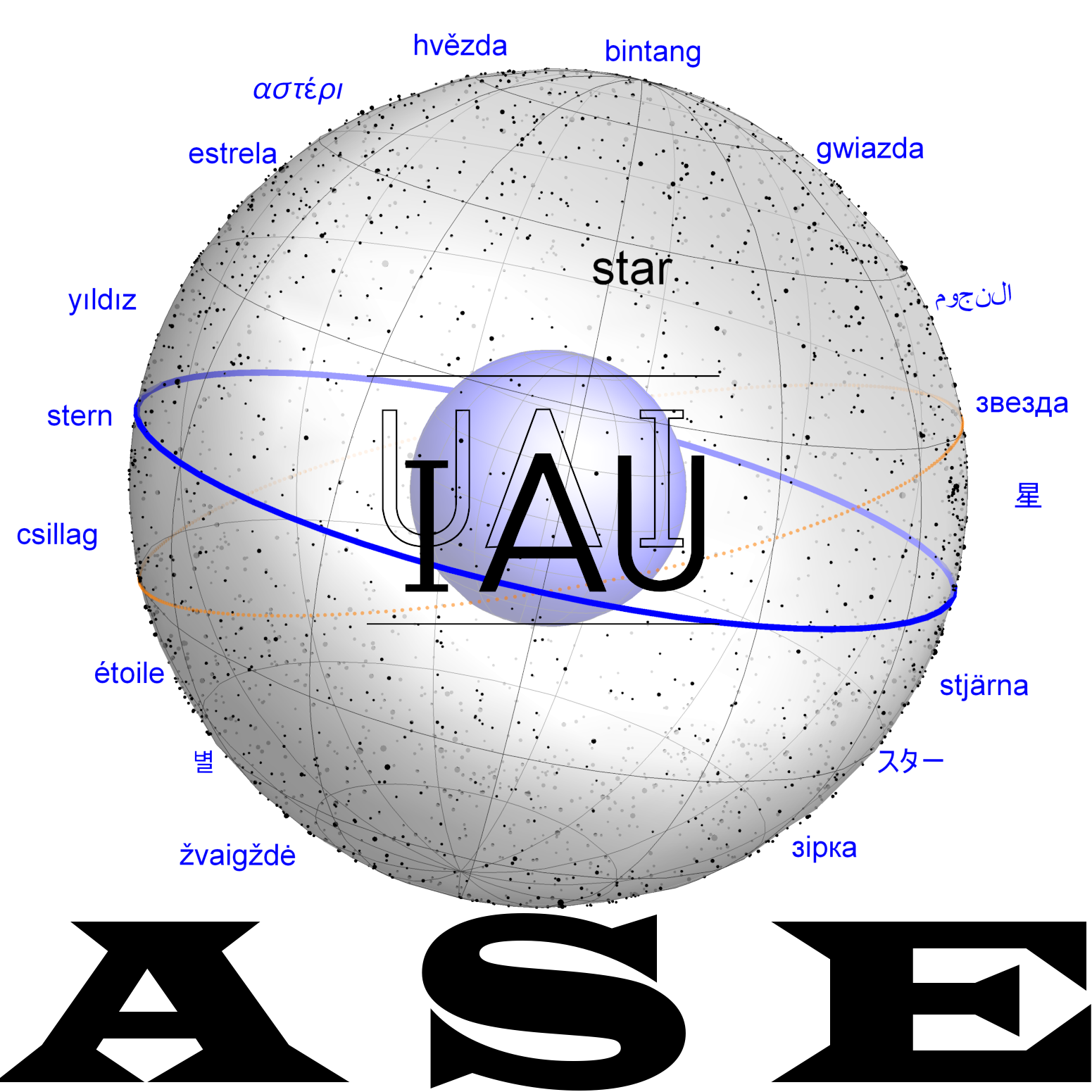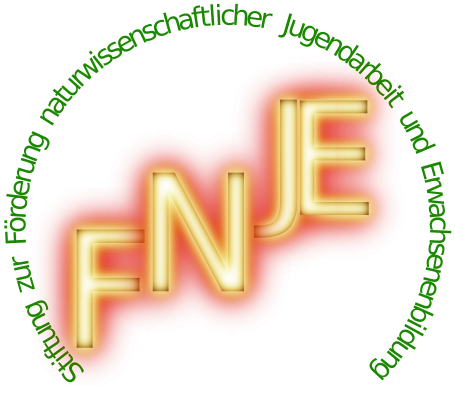Nusku: Difference between revisions
No edit summary |
DavidHilder (talk | contribs) No edit summary |
||
| Line 5: | Line 5: | ||
==Dictionary== |
==Dictionary== |
||
===Kurtik with Hilder, Hoffmann, Horowitz, Kim=== |
===Kurtik with Hilder, Hoffmann, Horowitz, Kim=== |
||
= <sup>d</sup>PA.TUG<sub>2</sub>/KU, <sup>d</sup>PA.LU, <sup>d</sup>Enšada/u; = <sup>d</sup>Nusku, Nusku, deity of light and fire; |
= <sup>d</sup>PA.TUG<sub>2</sub>/KU, <sup>d</sup>PA.LU, <sup>d</sup>''Enšada''/''u''; = <sup>d</sup>''Nusku'', Nusku, deity of light and fire; |
||
* 1) = name of Mercury as the evening star, |
* 1) = name of Mercury as the evening star, |
||
| Line 14: | Line 14: | ||
!Sources!!Identifications |
!Sources!!Identifications |
||
|- |
|- |
||
|'''Star List VR, 46 1:14.''' |
|'''Star List VR, 46 1:14.''' |
||
<sup>mul</sup>giš.bar zalag<sub>2</sub> ša<sub>2</sub> igi <sup>d</sup>En-me-šar<sub>2</sub>-ra <sup>d</sup>Nusku(PA.TUG<sub>2</sub>) "Girra, light ahead of Enmesharra, Nusku" [HBA, 51; Wee 2016, 162-63]. |
* <sup>mul</sup>giš.bar zalag<sub>2</sub> ''ša''<sub>2</sub> igi <sup>d</sup>''En-me-šar''<sub>2</sub>-''ra'' <sup>d</sup>''Nusku''(PA.TUG<sub>2</sub>) "Girra, light ahead of Enmesharra, Nusku" [HBA, 51; Wee 2016, 162-63]. |
||
|Example |
|Example |
||
|- |
|- |
||
| Line 23: | Line 23: | ||
|} |
|} |
||
===Additional=== |
===Additional=== |
||
'''II. Deity.''' |
|||
==== II. Deity. ==== |
|||
The mythological status of Nusku is variously defined in different texts. His name may have meant "Lord of the scepter" [Lambert 2002]. He was considered the son (in another version - vizier) of Enlil, in divine genealogies - the son of <sup>d</sup>En.ul and <sup>d</sup>Nin.ul. In Neo-Assyrian contexts, he was honored in Harran as the son of the lunar deity Sin. His general function over the Mesopotamian world — the god of light and fire. His symbol on Old Babylonian seals was an object similar to lightning, on kudurra — a lamp [Kurtik 2007, fig. 48]. A number of texts testify to his astral meaning and significance. See. [MNM 2, 230; Black-Green 1992, 145; Braun-Holzinger 1996, 339; Tallqvist 1938, 432-434; Lewy 1948; Litke 1998, 50; Seidl 1968, 34-35, 128-130; Streck 1998-2001; Wiggermann 1992, 112]. |
The mythological status of Nusku is variously defined in different texts. His name may have meant "Lord of the scepter" [Lambert 2002]. He was considered the son (in another version - vizier) of Enlil, in divine genealogies - the son of <sup>d</sup>En.ul and <sup>d</sup>Nin.ul. In Neo-Assyrian contexts, he was honored in Harran as the son of the lunar deity Sin. His general function over the Mesopotamian world — the god of light and fire. His symbol on Old Babylonian seals was an object similar to lightning, on kudurra — a lamp [Kurtik 2007, fig. 48]. A number of texts testify to his astral meaning and significance. See. [MNM 2, 230; Black-Green 1992, 145; Braun-Holzinger 1996, 339; Tallqvist 1938, 432-434; Lewy 1948; Litke 1998, 50; Seidl 1968, 34-35, 128-130; Streck 1998-2001; Wiggermann 1992, 112]. |
||
==== III. Identification. ==== |
|||
= Mercury; H. and J. Levy provide some indirect evidence in favor of this identification: |
|||
* (1) Neo-Assyrian letters mention Nusku as a celestial luminary not related to the Moon: <sup>d</sup>30 ''ina'' UGU GIŠ.ŠIBIR ''kam-mu-us'' 2 AGA.MEŠ ''ina'' SAG.DU ''š''[''ak-nu''] / <sup>[d]</sup>PA.TUG<sub>2</sub> ''ina'' IGI-''šu''<sub>2</sub> ''iz-za-az'' "Sin was mounted on top of the rod, 2 crowns were pl[aced] on (his) head, Nusku stood before him." [LABS, 174:12-13]. Here it seems to refer to a temple built in honor of Sin, which included a symbolic image of Nusku; however, it is also possible that the name "Nusku" here denotes a luminary, as Levi believes. Additionally, refer to a list of prayers to the astral gods (Pleiades, Moon, Sirius, Mars, Vega) in another Neo-Assyrian letter that begins with an invocation to Nusku: 3 [Š]U.IL<sub>2</sub>.LA<sub>2</sub>.KAM<sub>2</sub>.MEŠ ''ša'' IGI <sup>d</sup>[PA.TUG<sub>2</sub>] "3 prayers of 'Laying on of Hands' (to be made) before [Nusku]." [LABS, 240:5; LAS 2, 178]; |
|||
* (2) addressing Nusku in a spell: EN<sub>2</sub> <sup>d</sup>PA.TUG<sub>2</sub> LUGAL ''mu-ši mu-na-mir uk-li'' / ''ta-za-az ina mu-ši-ma'' UN.MEŠ ''ta-bar-ri'' "Spell. Nusku, king of the night, who illuminates the darkness, you stand in the night and test the people." [KAR I, Nr. 58:39-40]; in the same spell Nusku is characterized as ''mut-tal-lik mu-ši'', ''mu-tal''-[''lik mu-ši''], lit. "walking in the night." [ibid, Nr. 58:45 r. 1], a definition applied to planets to distinguish them from fixed stars [Tallqvist 1938, 19; Mayer 1976, 407]; |
|||
* (3) in the list of numerical designations of the astral gods (30 - Sin, 20 - Shamash, 6 - Adad, [x] - Marduk, 15 - Ishtar, 50 - Ninurta, 12 - Nergal) Mercury corresponds to the line: ''tap-pe-e Šamši''(20) | 10 | <sup>d</sup>NE.GI <sup>d</sup>PA.TUG<sub>2</sub> "Satellites of the Sun | 10 | Girru (and) Nusku" [CT 25, 50:16], which probably has astronomical significance. According to Lewy, Girru and Nusku are names for Mercury as the morning and evening star respectively [Lewy 1948]. See also: <sup>d</sup>''Nusku tappê'' <sup>d</sup>''Šamaš at''[''ta''] "Nusku, y[ou] are the satellite of the Sun", quoted in [Mayer 1976, 407, 12]. С. Parpola rejects the identity Nusku = Mercury, cf. [LAS 2, 101]. |
|||
= day of the Moon's invisibility; the interpretation is based on the identity: <sup>d</sup>Nusku(<sup>d</sup>PA+KU) DUMU še-la-še-e bu-um-bu-bu-li "God Nusku, son of the 30th (day of the month), (day of) bumbuli" [Litke 1998, 36, note 145]; the standard interpretation is bubbulu "day of the Moon's invisibility" preceding neomenia [CAD B, 298], see also [LAS 2, 101]. |
= day of the Moon's invisibility; the interpretation is based on the identity: <sup>d</sup>''Nusku''(<sup>d</sup>PA+KU) DUMU ''še-la-še-e bu-um-bu-bu-li'' "God Nusku, son of the 30th (day of the month), (day of) bumbuli" [Litke 1998, 36, note 145]; the standard interpretation is bubbulu "day of the Moon's invisibility" preceding neomenia [CAD B, 298], see also [LAS 2, 101]. |
||
==Historical Dictionaries== |
==Historical Dictionaries== |
||
Revision as of 10:39, 24 April 2025
dNusku is an ancient Mesopotamian fire deity, sometimes used to designate celestial bodies.
Dictionary
Kurtik with Hilder, Hoffmann, Horowitz, Kim
= dPA.TUG2/KU, dPA.LU, dEnšada/u; = dNusku, Nusku, deity of light and fire;
- 1) = name of Mercury as the evening star,
- 2) name of the day of the Moon's invisibility [Lewy 1948; Litke 1998, 50, I 252 + note; Streck 1998-2001].
| Sources | Identifications |
|---|---|
Star List VR, 46 1:14.
|
Example |
| "Letters."
See. [LABS, 174:12-14; 240:5]. See also the list of numerical designations of the gods [CT 25, 50:16] and the spell from Ashur [KAR I, Nr. 58:39-40, 45, r. 1]. |
Additional
II. Deity.
The mythological status of Nusku is variously defined in different texts. His name may have meant "Lord of the scepter" [Lambert 2002]. He was considered the son (in another version - vizier) of Enlil, in divine genealogies - the son of dEn.ul and dNin.ul. In Neo-Assyrian contexts, he was honored in Harran as the son of the lunar deity Sin. His general function over the Mesopotamian world — the god of light and fire. His symbol on Old Babylonian seals was an object similar to lightning, on kudurra — a lamp [Kurtik 2007, fig. 48]. A number of texts testify to his astral meaning and significance. See. [MNM 2, 230; Black-Green 1992, 145; Braun-Holzinger 1996, 339; Tallqvist 1938, 432-434; Lewy 1948; Litke 1998, 50; Seidl 1968, 34-35, 128-130; Streck 1998-2001; Wiggermann 1992, 112].
III. Identification.
= Mercury; H. and J. Levy provide some indirect evidence in favor of this identification:
- (1) Neo-Assyrian letters mention Nusku as a celestial luminary not related to the Moon: d30 ina UGU GIŠ.ŠIBIR kam-mu-us 2 AGA.MEŠ ina SAG.DU š[ak-nu] / [d]PA.TUG2 ina IGI-šu2 iz-za-az "Sin was mounted on top of the rod, 2 crowns were pl[aced] on (his) head, Nusku stood before him." [LABS, 174:12-13]. Here it seems to refer to a temple built in honor of Sin, which included a symbolic image of Nusku; however, it is also possible that the name "Nusku" here denotes a luminary, as Levi believes. Additionally, refer to a list of prayers to the astral gods (Pleiades, Moon, Sirius, Mars, Vega) in another Neo-Assyrian letter that begins with an invocation to Nusku: 3 [Š]U.IL2.LA2.KAM2.MEŠ ša IGI d[PA.TUG2] "3 prayers of 'Laying on of Hands' (to be made) before [Nusku]." [LABS, 240:5; LAS 2, 178];
- (2) addressing Nusku in a spell: EN2 dPA.TUG2 LUGAL mu-ši mu-na-mir uk-li / ta-za-az ina mu-ši-ma UN.MEŠ ta-bar-ri "Spell. Nusku, king of the night, who illuminates the darkness, you stand in the night and test the people." [KAR I, Nr. 58:39-40]; in the same spell Nusku is characterized as mut-tal-lik mu-ši, mu-tal-[lik mu-ši], lit. "walking in the night." [ibid, Nr. 58:45 r. 1], a definition applied to planets to distinguish them from fixed stars [Tallqvist 1938, 19; Mayer 1976, 407];
- (3) in the list of numerical designations of the astral gods (30 - Sin, 20 - Shamash, 6 - Adad, [x] - Marduk, 15 - Ishtar, 50 - Ninurta, 12 - Nergal) Mercury corresponds to the line: tap-pe-e Šamši(20) | 10 | dNE.GI dPA.TUG2 "Satellites of the Sun | 10 | Girru (and) Nusku" [CT 25, 50:16], which probably has astronomical significance. According to Lewy, Girru and Nusku are names for Mercury as the morning and evening star respectively [Lewy 1948]. See also: dNusku tappê dŠamaš at[ta] "Nusku, y[ou] are the satellite of the Sun", quoted in [Mayer 1976, 407, 12]. С. Parpola rejects the identity Nusku = Mercury, cf. [LAS 2, 101].
= day of the Moon's invisibility; the interpretation is based on the identity: dNusku(dPA+KU) DUMU še-la-še-e bu-um-bu-bu-li "God Nusku, son of the 30th (day of the month), (day of) bumbuli" [Litke 1998, 36, note 145]; the standard interpretation is bubbulu "day of the Moon's invisibility" preceding neomenia [CAD B, 298], see also [LAS 2, 101].
Historical Dictionaries
| Kurtik (2022, n55) | Gössmann (1950) |
|---|---|
| = dPA.TUG2/KU, dPA.LU, dEnšada/u; = dNusku, Нуску, божество света и огня; 1) = название Меркурия как вечерней звезды, 2) название дня невидимости Луны [Lewy 1948; Litke 1998, 50, I 252 + note; Streck 1998–2001].
I. Источники. Список звезд VR, 46 1:14. mulgiš.bar zalag2 ša2 igi dEn-me-šar2-ra dNusku(PA.TUG2) «Гирра, свет впереди Энмешарры, Нуску» [HBA, 51; Wee 2016, 162–63]. «Письма». См. [LABS, 174:12–14; 240:5]. См. также список цифровых обозначений богов [CT 25, 50:16] и заклинание из Ашшура [KAR I, Nr. 58:39–40, 45, r. 1]. II. Божество. Мифологический статус Нуску в разных текстах определяется по-разному. Его имя, возможно, означало «Господин скипетра» [Lambert 2002]. Он считался сыном (по другой версии — визирем) Энлиля, в божественных генеалогиях — сыном dEn.ul и dNin.ul. В новоассирийский период почитался в Харране как сын лунного божества Сина. Его основная обще месопотамская функция — бог света и огня. Его символом на старовавилонских печатях был предмет, похожий на молнию, на кудурру — лампа [Куртик 2007, рис. 48]. Ряд текстов свидетельствуют о его астральном значении. См. [МНМ 2, 230; Black–Green 1992, 145; Braun–Holzinger 1996, 339; Tallqvist 1938, 432–434; Lewy 1948; Litke 1998, 50; Seidl 1968, 34–35, 128–130; Streck 1998–2001; Wiggermann 1992, 112]. III. Отождествление. = Меркурий; Х. и Ю. Леви приводят ряд косвенных свидетельств в пользу такого отождествления: (1) В новоассирийском письме Нуску упоминается как небесное светило, не связанное с Луной: d30 ina UGU GIŠ.ŠIBIR kam-mu-us 2 AGA.MEŠ ina SAG.DU š[ak-nu] / [d]PA.TUG2 ina IGI-šu2 iz-za-az «Син был установлен на верху жезла, 2 короны на (его) голове по[мещены], Нуску стоял перед ним» [LABS, 174:12–13]. Здесь речь идет, по-видимому, об устройстве храма, сооруженного в честь Сина, включавшего символическое изображение Нуску; однако, возможно, также, что имя «Нуску» здесь обозначает светило, как считают Леви. Дополнительно укажем на список молитв к астральным богам (Плеядам, Луне, Сириусу, Марсу, Веге) в другом новоассирийском письме, который начинается с обращения к Нуску: 3 [Š]U.IL2.LA2.KAM2.MEŠ ša IGI d[PA.TUG2] «3 молитвы «Воздевания рук» (должны быть совершены) перед [Нуску]» [LABS, 240:5; LAS 2, 178]; (2) обращение к Нуску в заклинании: EN2 dPA.TUG2 LUGAL mu-ši mu-na-mir uk-li / ta-za-az ina mu-ši-ma UN.MEŠ ta-bar-ri «Заклинание. Нуску, царь ночи, освещающий тьму, ты стоишь в ночи и проверяешь людей» [KAR I, Nr. 58:39–40]; в этом же заклинании Нуску характеризуется как mut-tal-lik mu-ši, mu-tal-[lik mu-ši], букв. «ходящий ночью» [ibid., Nr. 58:45 r. 1], определение, применяемое к планетам, чтобы отличить их от неподвижных звезд [Tallqvist 1938, 19; Mayer 1976, 407]; (3) в списке цифровых обозначений астральных богов (30 — Син, 20 — Шамаш, 6 — Адад, [x] — Мардук, 15 — Иштар, 50 — Нинурта, 12 — Нергал) Меркурию соответствует строка: tap-pe-e Šamši(20) | 10 | dNE.GI dPA.TUG2 «Спутники Солнца | 10 | Гирру (и) Нуску» [CT 25, 50:16], имеющая, возможно, астрономическое значение. Cогласно Леви, Гирру и Нуску — это названия Меркурия соответственно как утренней и вечерней звезды [Lewy 1948]. См. также: dNusku tappê dŠamaš at[ta] «Нуску, т[ы] спутник Солнца», цит. по [Mayer 1976, 407, 12]. С. Парпола отвергает тождество Нуску = Меркурий, см. [LAS 2, 101]. = день невидимости Луны; интерпретация основана на тождестве: dNusku(dPA+KU) DUMU še-la-še-e bu-um-bu-li «Бог Нуску, сын 30-го (дня месяца), (дня) bumbuli» [Litke 1998, 36, note 145]; стандартное толкование bubbulu «день невидимости Луны», предшествующий неомении [CAD B, 298], см. также [LAS 2, 101]. |
Example |




